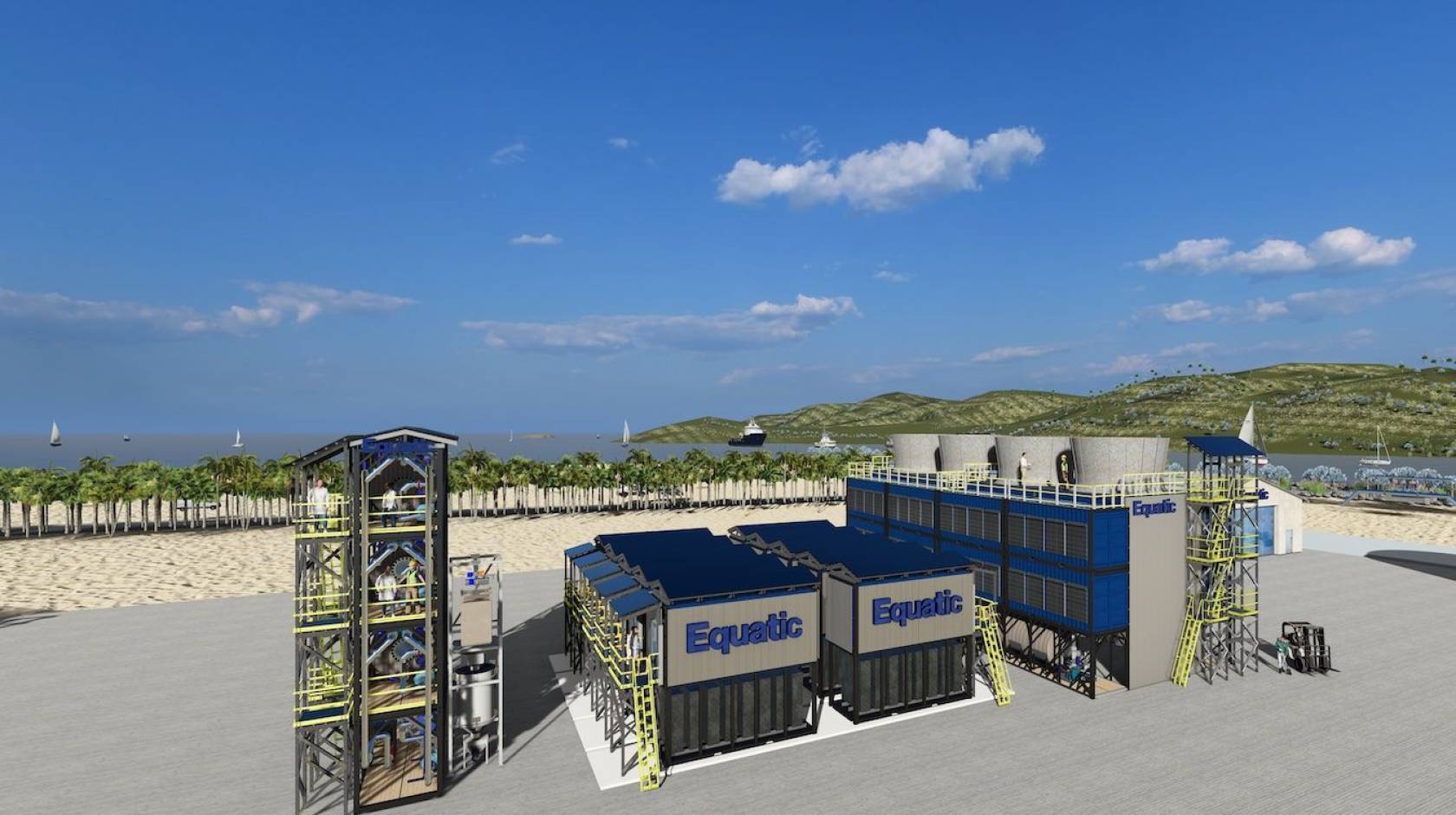Christine Wei-li Lee, UCLA

Last October, Time magazine named a technology developed by the UCLA startup Equatic that removes carbon dioxide from seawater while producing carbon-negative hydrogen, a clean fuel, one of its best inventions of 2023.
The innovative process durably stores the carbon dioxide in the form of solid minerals and allows the ocean to absorb more of the greenhouse gas from the atmosphere, helping to combat climate change.
Now, on the heels of the successful launch and operation of two pilots in Los Angeles and Singapore last spring, UCLA and Equatic are gearing up for their next phase: a $20 million full-scale demonstration plant supported by Singapore’s national water agency and its National Research Foundation, and by UCLA’s Institute for Carbon Management.
Over the next 18 months, a multidisciplinary team of researchers and technology-scaling experts from the UCLA institute and Equatic will set out to build the world’s largest ocean-based CO2-removal plant in Tuas, in western Singapore. The plant, when fully scaled and operational, will have the capacity to remove some 3,650 metric tons (more than 8 million pounds) of CO2 from seawater and the atmosphere a year.
Once the facility has successfully fulfilled its technical demonstration objectives, the participants said, Equatic plans to scale and commercialize the technology globally.
“Scaling carbon removal solutions requires technology, bold and committed partners, and a focus on timely and measurable success,” said Equatic co-founder and Institute of Carbon Management director Gaurav Sant, who is the Pritzker Professor of Sustainability at the UCLA Samueli School of Engineering. “We have been very fortunate to create this shared vision with our partners in Singapore to scale Equatic’s solutions to the commercial scale and around the world.”
